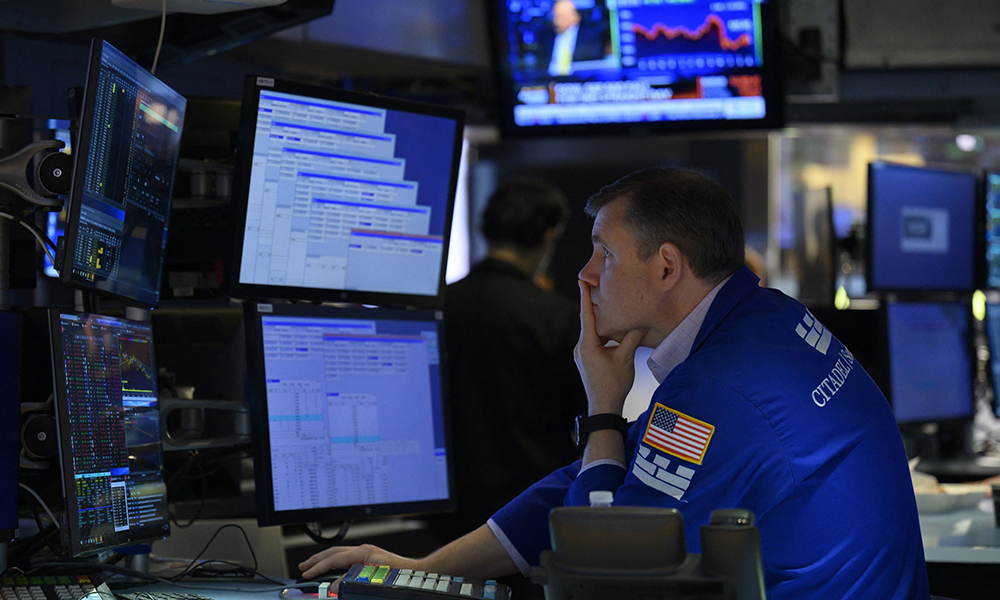 圖片來(lái)源:ANGELA WEISS—AFP/GETTY IMAGES
圖片來(lái)源:ANGELA WEISS—AFP/GETTY IMAGES全球商業(yè)領(lǐng)袖在過(guò)去幾年里需要應(yīng)對(duì)諸多挑戰(zhàn),,如新冠肺炎疫情、俄烏沖突,、通貨膨脹和地緣政治不確定性,,他們無(wú)法做出未來(lái)會(huì)更容易或是情況更為熟悉的假設(shè)。相反,,未來(lái)十年的經(jīng)濟(jì),、銀行業(yè)和投資格局可能會(huì)與近期的情況截然不同。
從經(jīng)濟(jì)上講,,21世紀(jì)是不同尋常的,。“全球資產(chǎn)負(fù)債表”是對(duì)整個(gè)世界經(jīng)濟(jì)的核算——計(jì)算家庭,、公司,、政府和金融機(jī)構(gòu)的資產(chǎn)和負(fù)債。2000年之前,,資產(chǎn)負(fù)債表與GDP實(shí)現(xiàn)同步增長(zhǎng),。從那以后,資產(chǎn)負(fù)債表上的資產(chǎn)增長(zhǎng)速度遠(yuǎn)遠(yuǎn)超過(guò)GDP,,股票和房地產(chǎn)等資產(chǎn)創(chuàng)造了160萬(wàn)億美元的賬面財(cái)富,。實(shí)際上,過(guò)剩的儲(chǔ)蓄無(wú)法在實(shí)體經(jīng)濟(jì)中找到有效的出口,,因此投資很少,。這導(dǎo)致經(jīng)濟(jì)增長(zhǎng)緩慢,全球通貨膨脹率低,,利率下降,。
這些趨勢(shì)現(xiàn)在可能正在消退。投資需求正在上升,。例如,,在這十年的剩余時(shí)間里,在實(shí)現(xiàn)凈零排放目標(biāo)的過(guò)程中,,將需要進(jìn)行增量投資(估計(jì)將占全球GDP的兩個(gè)百分點(diǎn)),。然后是對(duì)新基礎(chǔ)設(shè)施、更強(qiáng)大的供應(yīng)鏈和國(guó)防的固定投入,。
接下來(lái)會(huì)發(fā)生什么,?我們又能做些什么?為了回答這些問(wèn)題,,麥肯錫全球研究院(McKinsey Global Institute)考慮了到2030年全球經(jīng)濟(jì)將如何演變的四種截然不同卻看似合理的情景,。
情景1:情景再現(xiàn)
僅以美國(guó)為例,,在這種情景下,波動(dòng)性減弱,,經(jīng)濟(jì)大致回到2000年至2020年的水平:高儲(chǔ)蓄、低通脹,、低利率,、投資疲弱以及勞動(dòng)力市場(chǎng)供求大致平穩(wěn)。生產(chǎn)率和產(chǎn)出增長(zhǎng)都很疲軟,。財(cái)富實(shí)現(xiàn)持續(xù)增長(zhǎng),,但代價(jià)是實(shí)際經(jīng)濟(jì)產(chǎn)出減少,不平等加劇,。資產(chǎn)負(fù)債表相對(duì)于GDP有所擴(kuò)張,,仍容易受到破壞。
情景2:回到70年代
不,,不是回歸厚底鞋和迪斯科,。在這種情景下,會(huì)出現(xiàn)類似于美國(guó)在上世紀(jì)70年代經(jīng)歷的滯脹的情況,。通貨膨脹和短期利率維持在4%左右,,壓低了包括股票和房地產(chǎn)在內(nèi)的資產(chǎn)的實(shí)際價(jià)值。央行必須在抗擊通脹與維護(hù)金融穩(wěn)定之間取得平衡,。消費(fèi)強(qiáng)勁,但增長(zhǎng)卻平平無(wú)奇,。企業(yè)盈利增長(zhǎng)緩慢,,價(jià)格不穩(wěn)定意味著市場(chǎng)波動(dòng)的風(fēng)險(xiǎn)很高。實(shí)際家庭財(cái)富下降,。相對(duì)于GDP,,全球資產(chǎn)負(fù)債表回歸歷史平均水平。
情景3:資產(chǎn)負(fù)債表重置
想想房地產(chǎn)/股票泡沫破裂后的日本,,1990年至2000年間,,其總資產(chǎn)凈值相對(duì)于GDP縮水了20%。這被稱為“失去的十年”,,本質(zhì)上是停滯和衰退的10年,,影響了財(cái)富、收入和金融穩(wěn)定,。在這種情景下,,財(cái)政和貨幣政策會(huì)大力收緊,以抑制通脹,。資產(chǎn)價(jià)格隨之下降,,給金融機(jī)構(gòu)帶來(lái)壓力,。長(zhǎng)期的去杠桿化會(huì)抑制經(jīng)濟(jì)增長(zhǎng),因?yàn)橄M(fèi)者在償還債務(wù)而不是進(jìn)行消費(fèi),。
情景4:生產(chǎn)力加速
這是唯一能預(yù)見(jiàn)收入和財(cái)富實(shí)現(xiàn)長(zhǎng)期增長(zhǎng)的情景,。加大實(shí)際投資以及數(shù)字和新興技術(shù)(如生成式人工智能)的部署將提高生產(chǎn)力。GDP實(shí)現(xiàn)快速,、廣泛增長(zhǎng),,使得家庭財(cái)富增加——僅在美國(guó)就增加了16萬(wàn)億美元。通脹下降,,而實(shí)際利率平均上升至1%左右,,支持生產(chǎn)性資本配置,并改善全球資產(chǎn)負(fù)債表的健康狀況,。在這種強(qiáng)大而穩(wěn)定的經(jīng)濟(jì)中,,實(shí)際存款會(huì)萎縮,央行會(huì)退出量化緊縮政策,。
這四種截然不同的情景有一個(gè)共同點(diǎn):帶來(lái)(現(xiàn)實(shí)世界)嚴(yán)重后果。根據(jù)我們的估計(jì),,到2030年,,僅在美國(guó),“資產(chǎn)負(fù)債表重置”和“高生產(chǎn)率”情景下的家庭財(cái)富差距就將達(dá)到48萬(wàn)億美元,。GDP增長(zhǎng)差距為1.7個(gè)百分點(diǎn)。
要為應(yīng)對(duì)如此廣泛的可能性進(jìn)行規(guī)劃,,企業(yè)需要超越追蹤利率決策或月度通脹數(shù)據(jù)等短期指標(biāo),。相反,,他們希望為塑造自身所在行業(yè)的長(zhǎng)期結(jié)構(gòu)性轉(zhuǎn)變進(jìn)行規(guī)劃,。是否正在實(shí)現(xiàn)凈零排放的承諾,?貿(mào)易政策是否會(huì)出現(xiàn)變化,?哪些國(guó)內(nèi)政策因素最重要?
由于未來(lái)是不確定的(而且可能更糟),企業(yè)需要加強(qiáng)風(fēng)險(xiǎn)管理,。可以采取的行動(dòng)包括提升股權(quán)緩沖能力,,強(qiáng)化資產(chǎn)負(fù)債表,,以及減輕宏觀風(fēng)險(xiǎn)。最后,即使在增強(qiáng)韌性的同時(shí),,企業(yè)也應(yīng)尋求新增長(zhǎng)機(jī)會(huì),,這可能需要開(kāi)發(fā)新商業(yè)模式和能力。
近年來(lái),,全球經(jīng)濟(jì)經(jīng)受了一次又一次的沖擊,。毫無(wú)疑問(wèn),許多人愿意回到相對(duì)平靜的時(shí)期,,如2019年,。但事實(shí)情況是,這是無(wú)法做出假設(shè)的,。
當(dāng)然,商業(yè)領(lǐng)袖和政策制定者應(yīng)該努力實(shí)現(xiàn)(設(shè)想的)最佳情景,,即“生產(chǎn)力加速”,。但考慮到近期的波動(dòng),他們也應(yīng)該為相對(duì)不利的情況做好準(zhǔn)備,。當(dāng)涉及到經(jīng)濟(jì)時(shí),,凡是過(guò)去,,不一定皆為序章,。 (財(cái)富中文網(wǎng))
揚(yáng)·米施克(Jan Mischke)是總部位于蘇黎世的麥肯錫全球研究院的合伙人。斯文·斯密特(Sven Smit)是麥肯錫公司阿姆斯特丹辦事處高級(jí)合伙人,,也是麥肯錫全球研究院的全球負(fù)責(zé)人,。奧利維亞·懷特(Olivia White)是麥肯錫公司舊金山辦事處的高級(jí)合伙人,也是麥肯錫全球研究院的主任,。
Fortune.com上發(fā)表的評(píng)論文章中表達(dá)的觀點(diǎn),,僅代表作者本人的觀點(diǎn),不代表《財(cái)富》雜志的觀點(diǎn)和立場(chǎng),。
譯者:中慧言-王芳
全球商業(yè)領(lǐng)袖在過(guò)去幾年里需要應(yīng)對(duì)諸多挑戰(zhàn),,如新冠肺炎疫情、俄烏沖突,、通貨膨脹和地緣政治不確定性,,他們無(wú)法做出未來(lái)會(huì)更容易或是情況更為熟悉的假設(shè)。相反,,未來(lái)十年的經(jīng)濟(jì),、銀行業(yè)和投資格局可能會(huì)與近期的情況截然不同。
從經(jīng)濟(jì)上講,,21世紀(jì)是不同尋常的,。“全球資產(chǎn)負(fù)債表”是對(duì)整個(gè)世界經(jīng)濟(jì)的核算——計(jì)算家庭,、公司,、政府和金融機(jī)構(gòu)的資產(chǎn)和負(fù)債,。2000年之前,資產(chǎn)負(fù)債表與GDP實(shí)現(xiàn)同步增長(zhǎng),。從那以后,,資產(chǎn)負(fù)債表上的資產(chǎn)增長(zhǎng)速度遠(yuǎn)遠(yuǎn)超過(guò)GDP,股票和房地產(chǎn)等資產(chǎn)創(chuàng)造了160萬(wàn)億美元的賬面財(cái)富,。實(shí)際上,,過(guò)剩的儲(chǔ)蓄無(wú)法在實(shí)體經(jīng)濟(jì)中找到有效的出口,因此投資很少,。這導(dǎo)致經(jīng)濟(jì)增長(zhǎng)緩慢,,全球通貨膨脹率低,利率下降,。
這些趨勢(shì)現(xiàn)在可能正在消退,。投資需求正在上升。例如,,在這十年的剩余時(shí)間里,,在實(shí)現(xiàn)凈零排放目標(biāo)的過(guò)程中,將需要進(jìn)行增量投資(估計(jì)將占全球GDP的兩個(gè)百分點(diǎn)),。然后是對(duì)新基礎(chǔ)設(shè)施,、更強(qiáng)大的供應(yīng)鏈和國(guó)防的固定投入。
接下來(lái)會(huì)發(fā)生什么,?我們又能做些什么,?為了回答這些問(wèn)題,麥肯錫全球研究院(McKinsey Global Institute)考慮了到2030年全球經(jīng)濟(jì)將如何演變的四種截然不同卻看似合理的情景,。
情景1:情景再現(xiàn)
僅以美國(guó)為例,,在這種情景下,波動(dòng)性減弱,,經(jīng)濟(jì)大致回到2000年至2020年的水平:高儲(chǔ)蓄,、低通脹、低利率,、投資疲弱以及勞動(dòng)力市場(chǎng)供求大致平穩(wěn),。生產(chǎn)率和產(chǎn)出增長(zhǎng)都很疲軟。財(cái)富實(shí)現(xiàn)持續(xù)增長(zhǎng),,但代價(jià)是實(shí)際經(jīng)濟(jì)產(chǎn)出減少,,不平等加劇。資產(chǎn)負(fù)債表相對(duì)于GDP有所擴(kuò)張,,仍容易受到破壞,。
情景2:回到70年代
不,不是回歸厚底鞋和迪斯科。在這種情景下,,會(huì)出現(xiàn)類似于美國(guó)在上世紀(jì)70年代經(jīng)歷的滯脹的情況,。通貨膨脹和短期利率維持在4%左右,壓低了包括股票和房地產(chǎn)在內(nèi)的資產(chǎn)的實(shí)際價(jià)值,。央行必須在抗擊通脹與維護(hù)金融穩(wěn)定之間取得平衡,。消費(fèi)強(qiáng)勁,但增長(zhǎng)卻平平無(wú)奇,。企業(yè)盈利增長(zhǎng)緩慢,,價(jià)格不穩(wěn)定意味著市場(chǎng)波動(dòng)的風(fēng)險(xiǎn)很高。實(shí)際家庭財(cái)富下降,。相對(duì)于GDP,,全球資產(chǎn)負(fù)債表回歸歷史平均水平。
情景3:資產(chǎn)負(fù)債表重置
想想房地產(chǎn)/股票泡沫破裂后的日本,,1990年至2000年間,,其總資產(chǎn)凈值相對(duì)于GDP縮水了20%。這被稱為“失去的十年”,,本質(zhì)上是停滯和衰退的10年,,影響了財(cái)富,、收入和金融穩(wěn)定,。在這種情景下,財(cái)政和貨幣政策會(huì)大力收緊,,以抑制通脹,。資產(chǎn)價(jià)格隨之下降,給金融機(jī)構(gòu)帶來(lái)壓力,。長(zhǎng)期的去杠桿化會(huì)抑制經(jīng)濟(jì)增長(zhǎng),,因?yàn)橄M(fèi)者在償還債務(wù)而不是進(jìn)行消費(fèi)。
情景4:生產(chǎn)力加速
這是唯一能預(yù)見(jiàn)收入和財(cái)富實(shí)現(xiàn)長(zhǎng)期增長(zhǎng)的情景,。加大實(shí)際投資以及數(shù)字和新興技術(shù)(如生成式人工智能)的部署將提高生產(chǎn)力,。GDP實(shí)現(xiàn)快速、廣泛增長(zhǎng),,使得家庭財(cái)富增加——僅在美國(guó)就增加了16萬(wàn)億美元,。通脹下降,而實(shí)際利率平均上升至1%左右,,支持生產(chǎn)性資本配置,,并改善全球資產(chǎn)負(fù)債表的健康狀況。在這種強(qiáng)大而穩(wěn)定的經(jīng)濟(jì)中,,實(shí)際存款會(huì)萎縮,,央行會(huì)退出量化緊縮政策。
這四種截然不同的情景有一個(gè)共同點(diǎn):帶來(lái)(現(xiàn)實(shí)世界)嚴(yán)重后果。根據(jù)我們的估計(jì),,到2030年,,僅在美國(guó),“資產(chǎn)負(fù)債表重置”和“高生產(chǎn)率”情景下的家庭財(cái)富差距就將達(dá)到48萬(wàn)億美元,。GDP增長(zhǎng)差距為1.7個(gè)百分點(diǎn),。
要為應(yīng)對(duì)如此廣泛的可能性進(jìn)行規(guī)劃,企業(yè)需要超越追蹤利率決策或月度通脹數(shù)據(jù)等短期指標(biāo),。相反,,他們希望為塑造自身所在行業(yè)的長(zhǎng)期結(jié)構(gòu)性轉(zhuǎn)變進(jìn)行規(guī)劃。是否正在實(shí)現(xiàn)凈零排放的承諾,?貿(mào)易政策是否會(huì)出現(xiàn)變化,?哪些國(guó)內(nèi)政策因素最重要?
由于未來(lái)是不確定的(而且可能更糟),企業(yè)需要加強(qiáng)風(fēng)險(xiǎn)管理,??梢圆扇〉男袆?dòng)包括提升股權(quán)緩沖能力,強(qiáng)化資產(chǎn)負(fù)債表,,以及減輕宏觀風(fēng)險(xiǎn),。最后,即使在增強(qiáng)韌性的同時(shí),,企業(yè)也應(yīng)尋求新增長(zhǎng)機(jī)會(huì),,這可能需要開(kāi)發(fā)新商業(yè)模式和能力。
近年來(lái),,全球經(jīng)濟(jì)經(jīng)受了一次又一次的沖擊,。毫無(wú)疑問(wèn),許多人愿意回到相對(duì)平靜的時(shí)期,,如2019年,。但事實(shí)情況是,這是無(wú)法做出假設(shè)的,。
當(dāng)然,,商業(yè)領(lǐng)袖和政策制定者應(yīng)該努力實(shí)現(xiàn)(設(shè)想的)最佳情景,即“生產(chǎn)力加速”,。但考慮到近期的波動(dòng),,他們也應(yīng)該為相對(duì)不利的情況做好準(zhǔn)備。當(dāng)涉及到經(jīng)濟(jì)時(shí),,凡是過(guò)去,,不一定皆為序章。(財(cái)富中文網(wǎng))
揚(yáng)·米施克(Jan Mischke)是總部位于蘇黎世的麥肯錫全球研究院的合伙人,。斯文·斯密特(Sven Smit)是麥肯錫公司阿姆斯特丹辦事處高級(jí)合伙人,,也是麥肯錫全球研究院的全球負(fù)責(zé)人,。奧利維亞·懷特(Olivia White)是麥肯錫公司舊金山辦事處的高級(jí)合伙人,也是麥肯錫全球研究院的主任,。
Fortune.com上發(fā)表的評(píng)論文章中表達(dá)的觀點(diǎn),,僅代表作者本人的觀點(diǎn),不代表《財(cái)富》雜志的觀點(diǎn)和立場(chǎng),。
譯者:中慧言-王芳
COVID-19. War in Europe. Inflation. Geopolitical uncertainty. Global business leaders have had a lot to deal with in the last few years, and they cannot assume the future will be any easier or more familiar. Rather, the economic, banking, and investment landscape of the next decade is likely to look materially different from the recent past.
Economically speaking, the 21st century has been unusual. The “global balance sheet” is an accounting of the whole world’s economy—counting up the assets and liabilities of households, corporations, governments, and financial institutions. Before 2000, the balance sheet grew in tandem with GDP. Since then, the assets on the balance sheet have increased far faster than GDP, as assets like equity and real estate created $160 trillion in paper wealth. In effect, a glut of savings couldn’t find productive outlets in the real economy, so investment was low. That contributed to sluggish growth, low global inflation, and declining interest rates.
These trends may now be fading. Investment requirements are rising. Progressing toward net-zero emissions, for example, will require incremental investment estimated at two percentage points of global GDP for the rest of this decade. Then there are the stated commitments to new infrastructure, stronger supply chains, and defense.
What’s next? And what can we do about it? To address those questions, the McKinsey Global Institute considered four different plausible scenarios for how the global economy will evolve by 2030.
Scenario #1: Repeat performance
Looking just at the United States, in this scenario, volatility ebbs, and the economy goes back to roughly where it was from 2000 to 2020: high savings, weak investment, a not-too-tight labor market, and low inflation and interest rates. Productivity and output growth are both weak. Wealth continues to grow, but at the expense of real economic output and higher inequality. The balance sheet expands relative to GDP and remains vulnerable to disruption.
Scenario #2: Back to the ’70s
No, not platform shoes and disco. In this scenario, there is something akin to the stagflation the U.S. experienced in the 1970s. Inflation and short-term interest rates stick at around 4%, depressing the real value of assets including equity and real estate. Central banks have to balance fighting inflation with supporting financial stability. Consumption is strong, but growth is unimpressive. Corporate earnings grow slowly, and the lack of price stability means a high risk of market volatility. Real household wealth declines. Relative to GDP, the global balance sheet reverts toward historic averages.
Scenario #3: A balance sheet reset
Think Japan after the real-estate/equity bubble burst, when its total net worth relative to GDP contracted by 20% from 1990 to 2000. Known as the “l(fā)ost decade,” this was essentially a 10-year episode of stagnation and recession, affecting wealth, income, and financial stability. In this scenario, fiscal and monetary policy tightens strongly to bring inflation down. Asset prices contract in response, putting financial institutions under pressure. Prolonged deleveraging dampens growth as consumers pay down debt rather than spend.
Scenario#4: Productivity acceleration
This is the only scenario that envisions long-term growth of both income and wealth. Greater real investment and the deployment of digital and emerging technologies such as generative A.I. raise productivity. Brisk, broad-based GDP growth boosts household wealth–as much as by an additional $16 trillion in the U.S. alone. Inflation falls while real interest rates rise to about 1 percent on average, supporting productive capital allocation, and improving the health of the global balance sheet. In this strong and stable economy, deposits shrink in real terms and central banks roll back quantitative tightening.
These four distinct scenarios have one thing in common: major real-world consequences. The difference in household wealth between the “balance sheet reset” and “high-productivity” scenarios adds up to $48 trillion in the United States alone by 2030, according to our estimates. And the difference in GDP growth is 1.7 percentage points.
To plan for such a broad range of possibilities, businesses need to go beyond tracking short-term indicators like interest rate decisions or monthly inflation numbers. Instead, they will want to plan for the longer-term structural shifts that will shape your industry. Are net-zero commitments being met? Are trade policies changing? What domestic policy factors matter most?
Because the future is uncertain (and could be worse), firms need to strengthen risk management. Actions could include bolstering equity buffers, strengthening balance sheets, and offloading macro risk. Finally, even while shoring up resilience, businesses should seek new growth opportunities, which may require developing new business models and capabilities.
In recent years, the global economy has endured shock after shock. No doubt many people wouldn’t mind a return to the relative calm of, say, 2019. But the fact is, that cannot be assumed.
Of course, business leaders and policymakers should strive to achieve the best scenario, “productivity acceleration.” But given recent volatility, they should also be preparing for the less favorable ones. When it comes to economics, what’s past is not always prologue.
Jan Mischke is a partner with the McKinsey Global Institute, based in Zurich. Sven Smit is a senior partner in Amsterdam, and global leader of the McKinsey Global Institute. Olivia White is a senior partner in McKinsey & Company’s San Francisco office and a director of the McKinsey Global Institute.
The opinions expressed in Fortune.com commentary pieces are solely the views of their authors and do not necessarily reflect the opinions and beliefs of Fortune.






